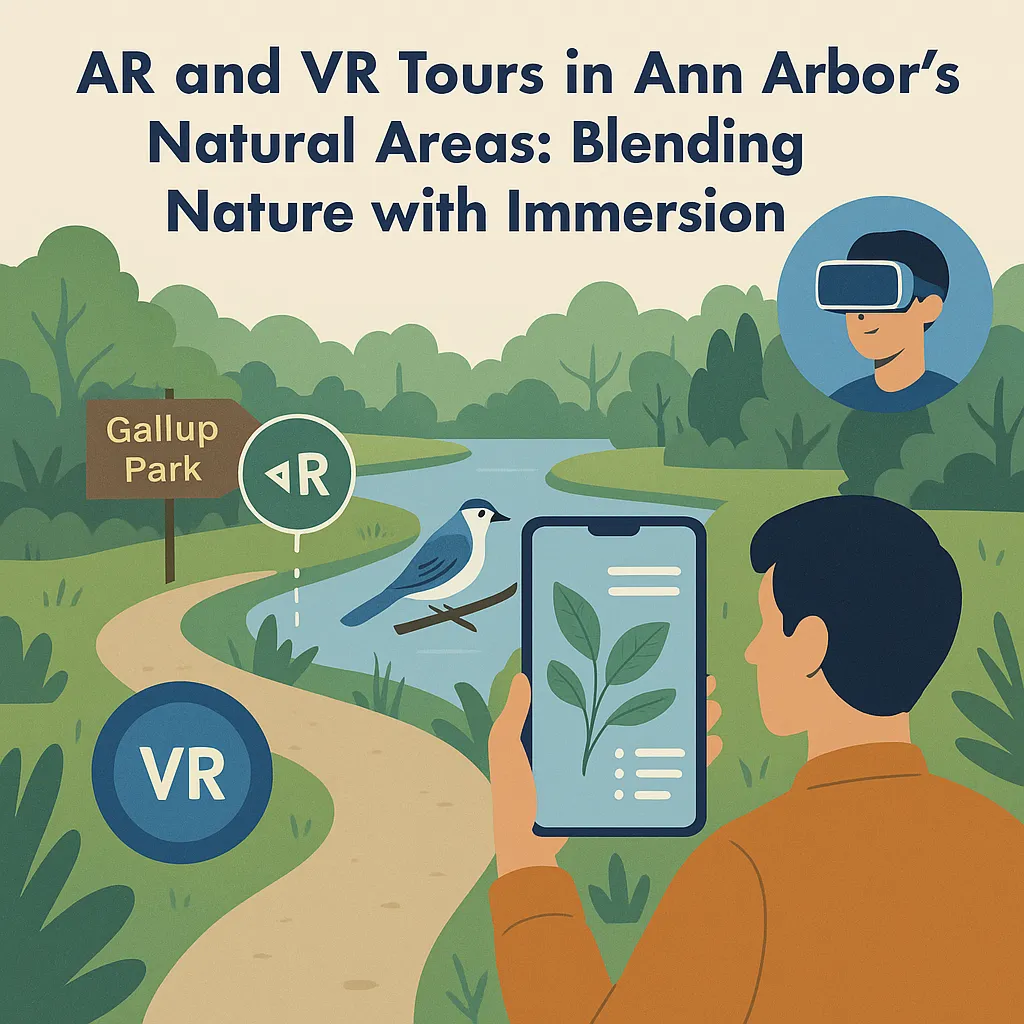Ann Arbor is a city that thrives at the crossroads of innovation and sustainability. Nowhere is that more evident than in the rise of AR (Augmented Reality) and VR (Virtual Reality) experiences being integrated into its beloved green spaces—such as Gallup Park, Nichols Arboretum, and the Barton Nature Area.
Whether you’re a curious visitor, a local student, or an eco-conscious tech enthusiast, these immersive digital tools are reshaping how we explore, learn, and connect with nature.
Why AR/VR in Parks?
Traditional signs and paper maps are no longer enough for the next generation of park-goers. AR/VR tours add a dynamic layer to outdoor exploration by providing interactive, personalized, and educational content in real time.
Through a phone, tablet, or VR headset, visitors can experience historical landscapes, see flora and fauna animations, or even meet a virtual ranger—all while physically walking through the real-world trails of Ann Arbor’s parks.
AR Experiences in Gallup Park and Nichols Arboretum
Imagine walking through Gallup Park, and your phone alerts you to a hidden birdwatching spot. As you raise your camera, an AR animation overlays the scene, showing the birds that typically nest in the trees before you. It’s educational, real-time, and deeply engaging.
At Nichols Arboretum, visitors can use an AR plant identification guide that overlays botanical facts and bloom timelines. Students studying botany can even follow a virtual quiz trail through the forest.
Key features:
- AR plant and tree markers
- Pop-up stories about wildlife and park history
- Interactive scavenger hunts for kids and families
Virtual Field Trips for Schools
Ann Arbor’s parks are also pioneering VR learning modules for schools. Using 360° video and VR environments, classrooms can take virtual trips through Barton Nature Area or the Huron River floodplain, complete with guided narration and interactive knowledge checkpoints.
Teachers can control the experience remotely, and students can:
- Explore ecosystems in different seasons
- Observe animal behaviors and plant cycles
- “Travel” through time to see how the land has changed over decades
These tools are especially valuable in winter months or for students with mobility limitations.
Historical Reconstruction with AR Layers
Ann Arbor’s natural areas carry deep history—from indigenous trails to post-industrial river restoration. Through AR, visitors can now visualize the past overlaid on the present. For example:
- See how Gallup Park looked in the early 1900s
- Follow a map of indigenous pathways layered over the current trail system
- Learn about the original landowners, flora changes, and early city planning decisions
This approach turns a simple walk into a layered educational journey—bringing forgotten stories back into the public eye.
Table: Applications of AR/VR in Ann Arbor’s Parks
| Use Case | Technology Format | Example Location |
|---|---|---|
| Wildlife interpretation | AR overlay (mobile) | Gallup Park |
| Plant ID and botany trails | AR + GPS trigger points | Nichols Arboretum |
| Historical timelines | Time-lapse AR | Barton Nature Area |
| Virtual field trips | VR 360° tours + narration | All major parks |
| Gamified education | AR scavenger hunts | Leslie Science & Nature Center |
Looking Ahead: The Future of AR/VR in Public Parks
Ann Arbor is exploring even more advanced uses of immersive tech in its park system:
- AI-generated naturalist guides in AR
- Multi-language overlays for tourists
- VR archives of extinct species that once lived in Michigan
- Integration with accessibility tools for users with disabilities
Collaborations with the University of Michigan and local tech startups may also lead to open-source platforms where users can build their own park tours or upload AR content to community maps.

